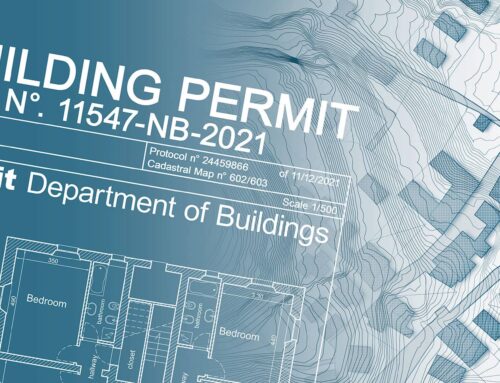What Is Amortization In Real Estate?
Are you interested in learning about amortization and real estate? Amortization is a powerful tool that can be used to understand the financial decisions related to buying or investing in real estate. In this article, we’ll go over what amortization is, how it works, the benefits and types of amortization, calculating amortization, and how it relates to real estate investing. Let’s dive right in!
What is Amortization?
Amortization is a fancy way of saying you’re paying off your mortgage in installments over time! It’s the process of spreading out payments over a period of time, with each payment consisting of both principal and interest. In real estate, amortization is the amount paid each month towards your loan and how long it will take to pay off the loan completely. With an amortized loan, each monthly payment reduces both the principal balance and interest due on the remaining balance. As you make more payments on your loan, more and more goes towards reducing your principal balance until, eventually all that remains is just interest. By understanding what amortization is in real estate and what an amortized loan means for you, you can plan for future financial stability when it comes to owning real estate.
How Does Amortization Work?
Payments on your property can be an overwhelming worry – but understanding how amortization works could help take the stress away! Amortization is when a loan is paid off in regular installments or payments. Each payment includes both principal and interest, allowing you to repay the loan over time. The amount of each payment stays the same throughout the life of the loan, making it easier to budget for your mortgage payments.
Your loan balance decreases with each payment, meaning that most of your early payments will consist primarily of interest. As time passes, more and more money from each payment will go towards paying off the principal balance until, eventually, all that’s left is just the principal. This makes amortization a great tool for managing long-term debt, as it keeps monthly payments low while still allowing you to pay off your debt over time.
Benefits of Amortization
One of the most significant benefits of amortization is that it helps keep monthly payments low while allowing you to pay off your debt over time. This can be beneficial for individuals and businesses looking to finance a large purchase, such as real estate, since they can spread out their payments over an extended period without being subject to high interest rates. Amortization also allows borrowers to take advantage of tax breaks due to loan interest deductions since the amount of interest paid decreases over the life of the loan.
Another benefit of amortization is that it provides predictability in terms of how much you will pay each month. Because your payment amount remains fixed, you can more easily budget and plan for upcoming expenses associated with owning or renting a property since you know exactly how much your mortgage or rent payment will be. Additionally, some lenders may even allow borrowers to make additional principal payments during the repayment period without paying extra fees or penalties.
Different Types of Amortization
You may be familiar with the concept of amortization, but did you know there are several different types to choose from? The most common type is a fixed-rate loan: this works by having regular payments that are the same amount each month. This provides stability and predictability, giving you peace of mind and confidence in your financial decision.
Another popular type of amortization is an adjustable-rate mortgage (ARM). ARMs can start with lower interest rates but then increase after a certain period of time. This makes them great for those who expect their income to increase over time or if they plan on selling the property soon.
Finally, balloon loans are another option when it comes to amortizing real estate debt. These require smaller monthly payments than traditional financing options. However, at the end of the term, there is one large lump sum payment due in full. Such loans can be beneficial if you need short-term financing but have no plans on keeping the property long-term.
Calculating Amortization
Figuring out how much you’ll be paying each month doesn’t have to be complicated – calculating amortization can help make it easier. Amortization is spreading out a loan into equal payments over its life, making it easier to manage and track your payments. To calculate amortization, you need to know the total loan amount, as well as the interest rate and term length of your loan. You then divide the total loan amount by the number of months in the loan’s term to determine your monthly payment. Additionally, you will need to factor in additional costs such as taxes, insurance, and closing fees which may not be included in your monthly payment. Once all these factors are accounted for, you can use an online calculator or spreadsheet program to determine your amortization schedule. This will provide a detailed breakdown of each individual payment associated with your loan so that you can better manage and track them over time.
Amortization and Real Estate Investing
Understanding how amortization works is key when it comes to investing in property, so you can plan out payments and create a solid financial roadmap. Amortization is a process by which the principal of a loan is paid down over time through periodic payments. When real estate investors use this process, they must consider the interest rate, term length, and payment schedule for their loan. Amortized loans are often used for commercial properties or investments that will be held long-term, such as rental properties. By having an amortized loan, investors know exactly what amount of interest and principal will be due each month until the entire debt is paid off. This provides certainty in regards to cash flow and budgeting for expenses related to the property investment. Additionally, since all of the interest tends to be front-loaded on an amortized loan, it can provide tax benefits if structured correctly.
Amortization vs. Depreciation: What’s the Difference?
Amortization and depreciation are both accounting methods used to allocate the cost of an asset over its useful life. However, they are applied to different types of assets and have distinct purposes.
- Amortization: Amortization is the process of spreading out the cost of intangible assets over a specific time period. Intangible assets include things like patents, copyrights, trademarks, and goodwill. These assets are not physical in nature but hold value for the business. Amortization expenses are recorded on the income statement and reduce the net income of a company. The purpose of amortization is to reflect the gradual consumption or expiration of intangible assets over their useful life.
- Depreciation: Depreciation, on the other hand, is the process of allocating the cost of tangible assets over their useful life. Tangible assets include physical items such as buildings, machinery, vehicles, and equipment. Depreciation expenses are also recorded on the income statement and reduce the net income of a company. The purpose of depreciation is to reflect the wear and tear, obsolescence, or decline in value of tangible assets over time.
In summary, amortization is used for intangible assets, while depreciation is used for tangible assets. Both methods aim to allocate the cost of an asset over its useful life, but they differ in terms of the types of assets and the nature of their value.
What Is Amortization In Real Estate?
Amortization in real estate refers to the gradual repayment of a loan through scheduled installments over a specified period of time. It involves the systematic reduction of the principal amount of the loan along with the payment of interest. The amortization process ensures that the loan is paid off in full by the end of the loan term. Each installment payment made by the borrower includes both principal and interest, with the proportion of principal gradually increasing over time while the interest portion decreases. Amortization schedules are commonly used in mortgages and other real estate loans to determine the amount of each installment payment and the remaining loan balance after each payment.
Are you feeling overwhelmed by the complexity of amortization and the home buying process? Look no further than The Storck Team, your trusted real estate agency! Our team of experts is here to guide you through every step, ensuring you make informed decisions and find your dream home. Don’t let confusion hold you back from achieving your homeownership goals. Take the first step today by reaching out to The Storck Team. Let us simplify the process and make your dreams a reality. Call us now and let our expertise navigate you through the complicated world of amortization and home purchases!







